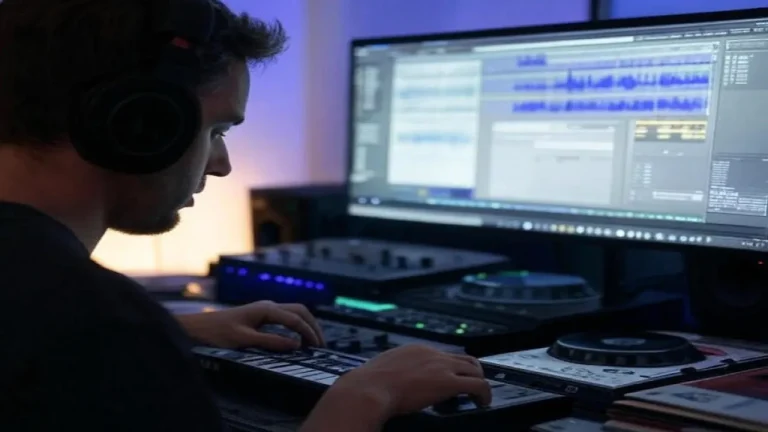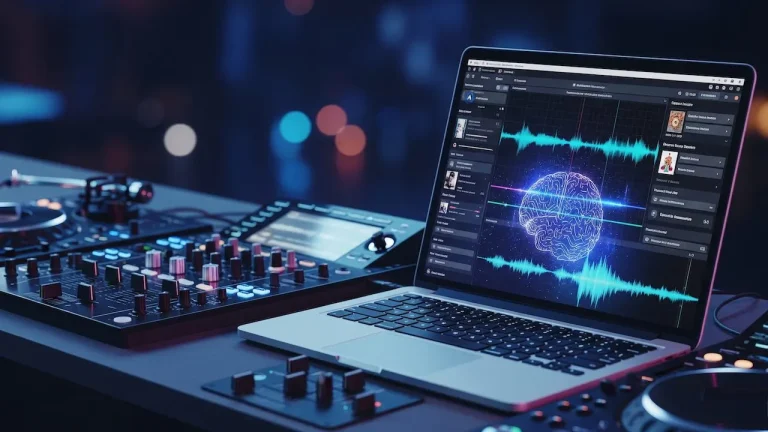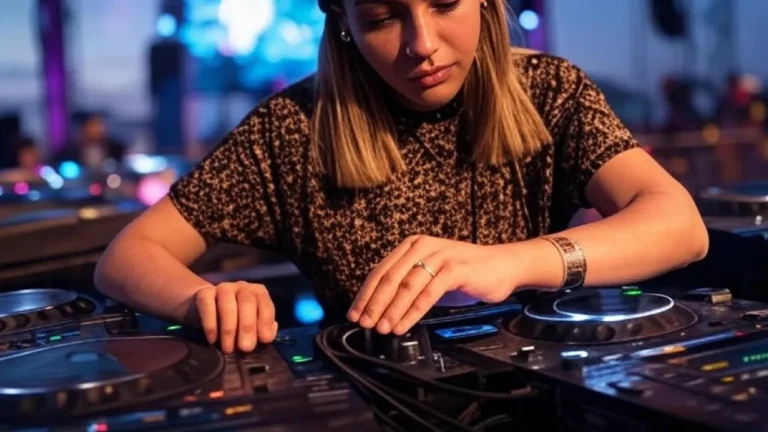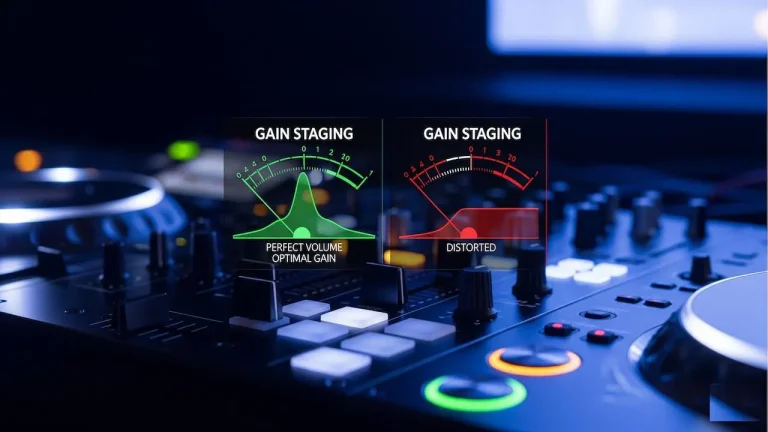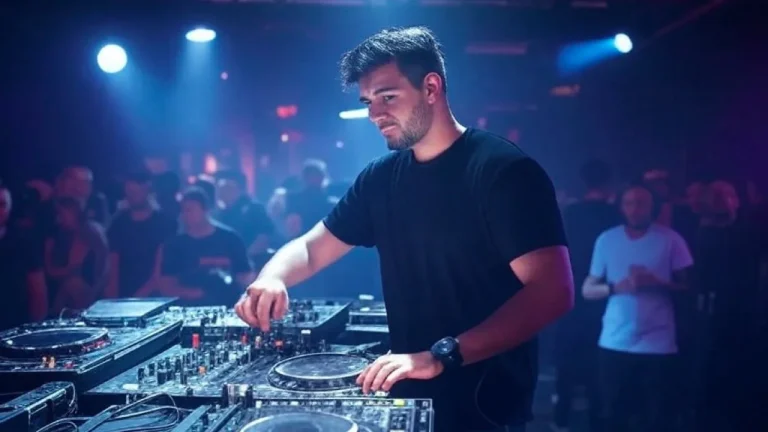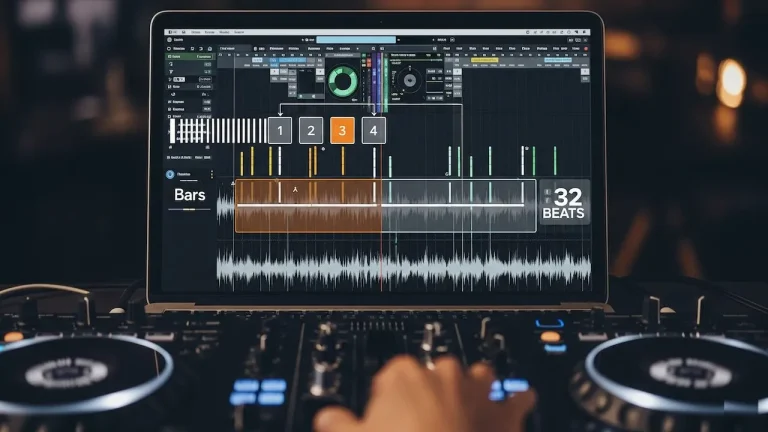Intermediate controller tricks combine hot cue patterns, loop manipulation, and advanced FX layering to create dynamic performances that separate skilled DJs from beginners. These techniques transform basic mixing into engaging live performances that captivate audiences and showcase technical prowess.
Modern DJ controllers offer powerful features that enable creative expression beyond simple track mixing. Master these 10 essential DJ techniques & take your DJ sets to the next level in 2025, skills from the simple spinback and tempo transition to EQ mixing. Advanced performers leverage multiple pad functions, effect chains, and loop manipulation to craft unique sonic experiences.
Hot Cue Programming Strategies
Strategic hot cue placement creates instant access to key track elements including drops, vocal hooks, and percussion breaks. Professional DJs organize their 8 hot cues using color coding systems and consistent positioning across their music library.
Effective hot cue programming involves identifying track sections such as intro, verse, chorus, breakdown, and outro. Cue points are a DJ’s secret weapon. On the surface they seem like a simple tool, but they’re actually the foundation for many advanced techniques. Smart positioning allows seamless switching between track elements during live performance.
| Hot Cue Position | Recommended Usage | Color Code |
|---|---|---|
| Cue 1 | Track Intro | Blue |
| Cue 2 | First Drop | Red |
| Cue 3 | Vocal Hook | Yellow |
| Cue 4 | Breakdown | Green |
| Cue 5 | Build Up | Orange |
| Cue 6 | Second Drop | Purple |
| Cue 7 | Outro Start | White |
| Cue 8 | Emergency Exit | Pink |
Live Remix Creation
Advanced DJs use hot cues to create live remixes by repeating specific sections and combining elements from different track parts. Looping a Key Moment: By setting a hot cue at a drop or breakdown and triggering it repeatedly, you can create live remixes or build anticipation before transitioning to the next track. This technique requires precise timing and musical understanding to maintain energy flow.
Loop Roll Mastery
Loop rolls add rhythmic complexity by creating short, repeating segments that build tension and excitement during transitions. These effects work best when synchronized with track tempo and applied strategically during breakdowns or build ups.
Modern controllers feature dedicated loop roll pads with preset lengths including 1/32, 1/16, 1/8, 1/4, 1/2, and 1 beat options. Once the effect bank is set up and you have a hot cue pattern in mind, it’s time to record. Press the effect on/off button to start the 4 beat roll effect. Timing these effects with musical phrasing creates professional sounding performances.
Roll Pattern Combinations
Expert DJs layer multiple roll patterns to create complex rhythmic textures. Combining 1/16 note rolls with hot cue stabs generates intricate patterns that maintain dancefloor energy while showcasing technical skill. Practice switching between different roll lengths smoothly to avoid jarring transitions.
Advanced FX Chaining
Effect chaining combines multiple audio processors to create unique soundscapes that transform basic tracks into dynamic performances. Professional controllers support up to 4 simultaneous effects per deck, enabling complex sonic manipulation.
Popular effect chains include reverb into filter, delay with echo, and distortion combined with bit crusher. Each effect requires careful parameter adjustment to avoid overpowering the original track. Start with subtle settings and gradually increase intensity to maintain musical coherence.
| Effect Chain | Best Use Case | Parameter Tips |
|---|---|---|
| Reverb + Filter | Breakdown transitions | Low reverb time, gradual filter sweep |
| Delay + Echo | Vocal emphasis | 1/8 note timing, moderate feedback |
| Phaser + Flanger | Build up enhancement | Slow rate, moderate depth |
| Distortion + Bit Crusher | Aggressive drops | Light distortion, high bit rate |
Performance Pad Techniques
Performance pads enable real time track manipulation through sampling, slicing, and instant looping functions. These 8 or 16 pad layouts provide tactile control over multiple track elements simultaneously.
Modern pad functions include hot cues, saved loops, roll effects, slicer mode, and sampler triggers. Controllerism, finger drumming, four-deck mixing, live remixing, re-editing, cue juggling… these are all new DJing paradigms, skills, and techniques that have either been invented or come to the fore with the advent of digital DJing. Mastering these functions requires dedicated practice and musical understanding.
Slicer Mode Applications
Slicer mode divides tracks into 8 equal segments, allowing individual triggering of each section. This function works particularly well with percussion heavy tracks and enables creation of unique drum patterns. Practice triggering slices in musical sequences to create coherent performances.
Multi Deck Coordination
Advanced DJs utilize 3 or 4 deck setups to layer multiple track elements and create complex soundscapes. This technique requires strong organizational skills and deep understanding of harmonic mixing principles.
Successful multi deck mixing involves assigning specific roles to each deck such as main track, percussion layer, vocal elements, and effect sends. This list of advanced DJ techniques contains all you need to know to become a better DJ in 2025, from improving your transitions to using multiple decks. Start with 2 deck mastery before progressing to more complex setups.
Layering Strategies
Effective layering requires careful frequency management using EQ controls and filters. Remove low frequencies from percussion layers to avoid muddiness, emphasize mid range frequencies for vocal elements, and maintain clean low end from the primary track. Use intermediate EQ techniques to achieve professional results.
Sync and Tempo Manipulation
Modern sync technology enables complex tempo manipulation while maintaining perfect timing across multiple tracks. Advanced DJs use sync strategically while retaining manual control over creative timing decisions.
Tempo rides involve gradually increasing or decreasing BPM to build energy or create tension. Practice smooth tempo transitions over 16 or 32 bar phrases to maintain musical flow. Combine tempo changes with filter sweeps and effect builds for maximum impact.
Manual Override Techniques
Expert DJs know when to disable sync for creative effect. Manual beatmatching during specific sections allows for intentional timing variations that add human feel to digital performances. Practice switching between sync and manual modes seamlessly.
Controller Hardware Optimization
Different controller models offer unique features that enable specific intermediate techniques. Understanding your hardware capabilities maximizes creative potential and performance quality.
Pioneer DJ DDJ-FLX10: Features a club-standard layout and full-sized jog wheels, making it a favorite for professional setups. Rane Four: A go-to choice for scratch DJs, thanks to its premium motorized platters. Choose controllers that match your performance style and technical requirements.
Firmware Updates and Customization
Regular firmware updates add new features and improve existing functions. Many controllers support custom mapping that allows personalized pad assignments and effect parameter control. Optimize your DJ gear setup for maximum efficiency.
People Also Ask
Hot cue programming, loop roll mastery, advanced FX chaining, and performance pad techniques represent the core intermediate controller skills. These functions enable creative expression beyond basic mixing and separate skilled DJs from beginners.
Dedicate 30 minutes daily to specific technique practice using familiar tracks. Focus on one skill at a time, record practice sessions for review, and gradually increase complexity as muscle memory develops.
Look for 8 performance pads, dedicated loop controls, multiple FX units, and full sized jog wheels. These hardware elements provide the tactile feedback and functionality needed for advanced performance techniques.
Apply the 80/20 rule where 80% of your set uses subtle or no effects, while 20% features creative FX applications. This balance maintains track integrity while showcasing technical skill during key moments.
Frequently Asked Questions
Many budget controllers support hot cues, loops, and basic effects that enable intermediate technique development. Focus on mastering available functions before upgrading to professional level hardware.
Expect 6 to 12 months of consistent practice to develop proficiency with intermediate techniques. Individual skill development varies based on practice frequency, musical background, and natural coordination abilities.
Sync enables focus on creative techniques without worrying about beatmatching accuracy. However, maintain manual beatmatching skills through regular practice sessions to retain fundamental DJ abilities.
House, techno, and hip hop provide clear structure and repetitive elements ideal for technique practice. These genres offer predictable patterns that make timing and placement of effects more intuitive for developing DJs.
Study crowd reactions and energy levels to determine appropriate technique timing. Learn to read your DJ crowd and apply techniques during natural energy peaks and transitions.
Adapt techniques to match genre characteristics and audience expectations. Jazz and classical audiences prefer subtle applications, while electronic dance music crowds appreciate more aggressive effect usage. Multi genre DJing requires style specific technique adjustment.


